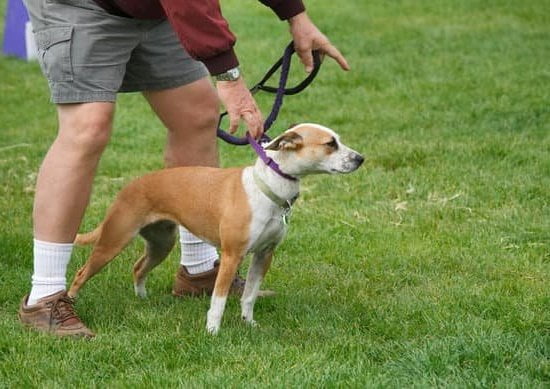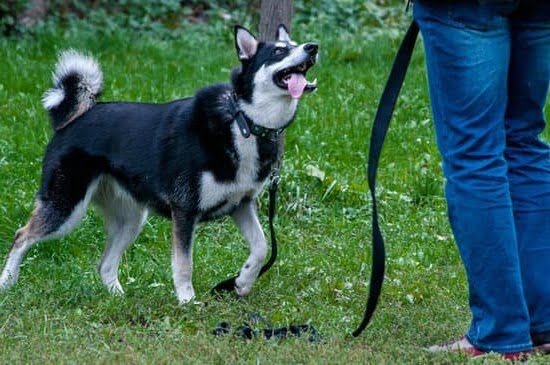Training your dog for search and rescue is a vital endeavor that can truly make a difference in locating missing persons. Search and rescue dogs possess specific skills and qualities that enable them to navigate various environments, detect scents, and track individuals who are lost or in danger. By training your own dog for search and rescue, you not only contribute to the welfare of your community but also develop a deep bond with your canine companion.
Search and rescue dogs play an extraordinary role in locating missing persons in all kinds of situations, from wilderness areas to urban settings. These remarkable animals are trained to use their exceptional sense of smell, endurance, and intelligence to locate individuals who may be trapped or disoriented. Their work saves lives and brings hope to families during difficult times.
When it comes to training a dog for search and rescue, certain traits are essential. A strong drive to work, high stamina levels, good concentration abilities, fearlessness, agility, and an excellent sense of smell are just some of the qualities needed.
Additionally, the breed of dog can play a role in determining its suitability for search and rescue work. Certain breeds such as Bloodhounds, German Shepherds, Labrador Retrievers, and Border Collies are often recognized for their natural aptitude in this field.
Training your own dog for search and rescue also comes with numerous benefits. Not only does it provide mental stimulation for your dog, but it also strengthens the bond between you as you work together towards a common goal.
It allows you to channel your dog’s energy into purposeful work while making a positive impact on your community. By training your own dog for search and rescue, you have the opportunity to create a true hero out of your beloved pet.
Understanding the Characteristics and Breeds Suitable for Search and Rescue Work
When it comes to training your dog for search and rescue work, it is crucial to select a breed with the right characteristics and traits. Not all dogs are suited for this demanding job, so it’s important to understand what qualities to look for.
One of the key traits to consider is a dog’s energy level. Search and rescue dogs need to be highly active and have the stamina to work for long periods of time. They should also possess a strong prey drive, as this will help motivate them during scent tracking exercises. Additionally, a good search and rescue dog is usually friendly and sociable, as they may have to interact with people they encounter during their missions.
Several breeds are known for excelling in search and rescue work due to their natural abilities and instincts. Border Collies, German Shepherds, Labrador Retrievers, and Belgian Malinois are among the most commonly used breeds in search and rescue operations. These breeds often possess the necessary physical endurance, intelligence, problem-solving skills, athleticism, as well as an exceptional sense of smell required for this type of work.
However, it’s important to note that breed alone does not guarantee success in search and rescue training. Mixed-breed dogs can also excel in this field if they have the right qualities and temperament. It ultimately comes down to individual traits rather than specific breed alone.
To select the right breed or mix for search and rescue training, you should consider your dog’s age, size, temperament, energy level, health history, as well as any previous training or experience they may have had. Consulting with experienced trainers or organizations specializing in search and rescue can provide valuable insights in making an informed decision regarding which breed or mix would be best suited for your specific training goals.
Factors to Consider When Selecting a Dog Breed
- Energy level: Dogs with high energy levels are generally better suited for search and rescue work.
- Prey drive: A strong prey drive can help motivate dogs during scent tracking activities.
- Trainability: Look for breeds known for being eager to please and quick learners.
- Temperament: Search and rescue dogs should be friendly, calm, and well-socialized.
- Physical attributes: Consider a dog’s size, strength, agility, and endurance.
- Health history: Ensure that the breed you choose does not have any genetic predispositions to health problems that could interfere with their performance or longevity in search and rescue work.
Building a Strong Foundation
Basic obedience training is crucial for any search and rescue dog, as it forms the foundation for their future work. Before diving into specialized search and rescue training, it is important to ensure that your dog has a solid understanding of basic commands. This section will discuss the importance of basic obedience training and provide step-by-step instructions for teaching essential commands such as sit, stay, come, and heel.
The first command to introduce is “sit.” This command is not only useful for controlling your dog’s behavior but can also be helpful in times of potential danger or when working in close proximity to the victim. Start by holding a treat close to your dog’s nose and slowly raise your hand upwards.
As your dog follows the treat with his eyes and head, his bottom will naturally lower into a sitting position. Once he sits down, reward him with the treat and praise. Repeat this process several times until your dog consistently responds to the “sit” command.
Next, you can move on to teaching the “stay” command. Begin by telling your dog to sit and show them an open palm towards their face while saying “stay.” Take a small step back while keeping eye contact with your dog. If they stay in the sitting position without moving forward, return to them after a few seconds and reward them with praise or treats. Gradually increase the distance and time that you ask your dog to stay.
Additionally, teaching the “come” command is crucial for off-leash search and rescue work when you need your canine partner to return to you promptly. Start by having someone hold onto your dog’s collar or leash gently while you walk away from them. Call out their name followed by the command “come” in an excited tone of voice. When they successfully reach you, reward them enthusiastically.
Lastly, introducing the “heel” command is essential for search and rescue dogs during controlled walks or when working in urban environments. Begin by holding your dog’s leash with your left hand and a treat in your right hand. Walk forward while keeping your dog on your left side, slightly behind you.
When you stop, make sure your dog comes to rest sitting at your side. Reward them for the correct position and repeat the process, gradually increasing the duration and distractions.
Reinforcing obedience training is crucial in various environments to maintain consistency. Practice these commands not only at home but also during walks, trips to the park, or other outdoor activities. Remember to use positive reinforcement such as treats, praise, and toys to reward desired behavior throughout the training process.
By establishing a strong foundation of basic obedience training, your search and rescue dog will be well-prepared for more specialized training techniques later on.
Introduction to Scent Work
When it comes to search and rescue work, a dog’s sense of smell is truly remarkable and serves as one of their most valuable tools. Canines have an exceptional olfactory system that allows them to detect scents that are undetectable to humans.
This unique ability makes them well-suited for tasks such as locating missing persons in various environments. In this section, we will delve into the significance of scent work in search and rescue training, explore the science behind a dog’s sense of smell, and provide exercises to enhance your dog’s olfactory skills.
Understanding the impact of scent work in search and rescue training is essential. Dogs are capable of detecting and discriminating scents with a level of precision that far surpasses human capabilities. They have specialized scent receptors in their nose which enable them to distinguish individual scents within a complex mixture. This enables them to pick up on subtle cues that can lead them to locate missing individuals.
The science behind a dog’s sense of smell is truly fascinating. A dog’s brain allocation for processing smells is 40 times greater than ours, making it their primary means of interpreting the world around them.
Their noses contain millions more olfactory receptor cells compared to humans, allowing them not only to detect specific odors but also assess the intensity and directionality. Understanding these capabilities helps us appreciate the power and potential our dogs possess when it comes to scent work.
To develop your dog’s sense of smell further, engaging in exercises and activities that focus on scent detection is crucial. One such exercise is known as “scent games.” Start by placing several containers or boxes in an area with different scented objects hidden in each one.
Encourage your dog to sniff each container and indicate which contains the desired scent by pawing or sitting next to it. Gradually increase the difficulty by adding more containers or hiding scents in more complex environments.
By engaging in scent work exercises like these, you are not only honing your dog’s innate abilities but also fostering a deeper bond with your canine companion. The rewarding feeling of watching your dog effectively track scents and locate hidden objects or individuals is both fulfilling and inspiring. In the next section, we will delve further into training your dog to track and follow scents effectively, equipping them with essential skills for search and rescue missions.
Training Your Dog to Track and Follow Scents
In search and rescue work, one of the most crucial skills for a dog is the ability to track and follow scents. This skill allows them to locate missing persons by following their scent trails, even in challenging environments. Training your dog to track scents effectively requires patience, consistency, and a structured approach.
To begin training your dog to track scents, start with simple exercises in a familiar environment. Use treats or toys with strong scents that your dog can easily locate. Leave a trail of these scented objects and encourage your dog to follow it using commands such as “Track” or “Find.” Gradually increase the difficulty level by making the scent trails longer or introducing distractions along the way.
It’s important to reinforce positive behaviors during scent tracking training. Whenever your dog successfully locates the scented object or completes a trail, reward them with praise and treats. This will help strengthen their association between tracking scents and receiving rewards, making them more motivated and focused on the task.
During the training process, it’s common to encounter challenges such as distractions or losing focus. If your dog gets distracted while tracking, use verbal cues or gentle leash guidance to redirect their attention back to the scent trail. If they lose focus entirely, go back a few steps in the training process and gradually build up again.
| Training Session | Length of Scent Trail (in feet) | Success Rate |
|---|---|---|
| Session 1 | 10 | 80% |
| Session 2 | 20 | 90% |
| Session 3 | 30 | 95% |
Tracking training progress can help you assess your dog’s improvement and identify areas that may need additional attention. Keep in mind that each dog progresses at their own pace, so be patient and adjust the difficulty level according to their abilities.
By consistently practicing scent tracking exercises, your dog will develop a strong foundation in this essential search and rescue skill. Next, we will explore wilderness and urban search techniques, which build upon the foundation of scent tracking to effectively navigate different environments.
Wilderness and Urban Search Techniques
When it comes to search and rescue operations, dogs may need to navigate various environments, including wilderness and urban settings. Each environment presents its own unique challenges, and it is crucial to train your dog to adapt to these different scenarios. In this section, we will explore the differences between wilderness and urban search techniques and provide strategies for training your dog to navigate each one effectively.
Wilderness search and rescue operations often involve large areas with rugged terrain and dense vegetation. Dogs trained for wilderness searches need to be comfortable traversing uneven terrain, crossing bodies of water, and maneuvering through thick brush.
It is essential to expose your dog to these types of environments gradually, allowing them time to build confidence and familiarity. Start by introducing your dog to open fields or parks with tall grass before progressing to more challenging terrains such as forests or mountains.
Urban search techniques require a different set of skills. Dogs must navigate through crowded streets, buildings, and other man-made structures while still being able to focus on finding scent cues from potential victims. Training should focus on exposure to common urban obstacles like stairs, elevators, tunnels, and confined spaces. Practice searching in different types of buildings such as houses or office complexes, gradually increasing the complexity level as your dog becomes more proficient.
To help your dog navigate both wilderness and urban environments successfully, consider the following strategies:
- Expose your dog gradually: Introduce new environments slowly and progressively by starting with less challenging areas before moving onto more difficult terrains.
- Use positive reinforcement: Reward your dog with treats or praise when they successfully overcome obstacles or confidently navigate unfamiliar environments.
- Socialization: Expose your dog not only to various physical environments but also to different sounds, sights, smells, and people they may encounter during real search missions.
By implementing these strategies in training sessions consistently, you can develop your dog’s confidence and ability to navigate both wilderness and urban environments. Remember to always prioritize safety during training and monitor your dog’s comfort level in each environment. With practice, patience, and positive reinforcement, your search and rescue dog will become a skilled navigator ready to assist in any situation.
| Training Tips | Considerations |
|---|---|
| Expose your dog gradually | This allows them time to build confidence and familiarity with different environments. |
| Use positive reinforcement | Reward your dog for successfully navigating obstacles or unfamiliar environments. |
| Socialization | Expose your dog not only to various physical environments but also to different sounds, sights, smells, and people they may encounter during real search missions. |
Introducing Search Commands and Techniques
The Importance of Search Commands and Techniques
In order for a search and rescue dog to be effective in their work, it is crucial to train them on specific search commands and techniques. These commands and techniques help the dog understand what they are being asked to do and how to carry out their tasks in an efficient manner. The use of these commands also allows handlers and other team members to effectively communicate with the dog during a search operation.
Training Your Dog on Specific Search Commands
One of the most important search commands to teach your dog is “Find.” This command indicates to the dog that there is someone or something they need to locate. It is essential to start by associating this command with a reward, such as a treat or toy, so that the dog understands that finding the target is a positive action.
Another crucial command is “Search.” This command directs the dog to begin searching for scents. It is important to teach your dog different search patterns, such as grid searching or spiral searching, depending on the situation. Consistency in using this command will help your dog understand what you expect from them when it comes to searching for scents.
The “Alert” command is also vital in training your search and rescue dog. This command teaches your dog how to indicate when they have found something or someone. This could be by barking, scratching at the ground, or any other appropriate indication agreed upon with your training team.
Implementing Systematic Search Patterns
During training exercises, it is essential to establish systematic search patterns that can then be applied during actual search operations. The most common patterns used in search and rescue include grid searches, parallel line searches, and sector searches.
When starting out with these systematic search patterns, it’s best to begin in simple open areas where there are no distractions. Gradually increase the complexity of the environment to challenge your dog’s abilities. This can include introducing obstacles, changing the terrain, or incorporating different weather conditions.
It is crucial to reward your dog for correct behavior and successful execution of search commands and techniques. Positive reinforcement in the form of treats, praise, or play helps solidify the association between the command and the desired behavior.
By training your search and rescue dog on specific search commands and techniques, you will enhance their ability to locate missing persons effectively. These commands and techniques provide a foundation for coordination with handlers and other team members during search operations. Additionally, implementing systematic search patterns ensures thorough coverage of the assigned area, increasing the chances of a successful search and rescue mission.
Simulating Real-Life Scenarios
Simulating real-life scenarios through mock search and rescue training is an essential step in preparing your dog for actual missions. This type of training allows you to create controlled environments that closely resemble the challenges your dog may encounter during a search and rescue operation.
By exposing your dog to realistic scenarios, you can assess their abilities, improve their skills, and enhance their overall performance. Here are some key aspects to consider when setting up mock search and rescue training.
Emphasizing Realism
To make your mock search and rescue training as realistic as possible, it is crucial to recreate the sights, sounds, and smells that your dog may encounter during real operations. Choose training locations that resemble the environments where your dog will be working, such as forests, urban areas, or disaster sites.
Add various elements to reflect the conditions they may face, such as obstacles, debris, or simulated victim scents. Creating a lifelike atmosphere helps familiarize your dog with potential distractions while ensuring they stay focused on their task.
Utilizing Volunteers or Training Aids
During mock search and rescue training, it is beneficial to involve volunteers who can act as “victims” for your dog to locate. These individuals should follow specific protocols to simulate real-life situations accurately. Alternatively, you can use scent-detection aids specifically designed for search and rescue training purposes.
These aids usually contain human scent samples that you strategically place in different locations for your dog to find. Incorporating volunteers or training aids ensures that your dog practices locating missing persons effectively.
Simulating Challenging Situations
To prepare your dog for unexpected challenges they may face during actual search and rescue missions, it is essential to simulate difficult situations during the training process. Encourage volunteers or use visual aids like mannequins or clothing articles to recreate scenarios such as locating a victim in water, in confined spaces, or under rubble. By exposing your dog to a range of challenging situations, you can help build their confidence, problem-solving skills, and adaptability.
Remember, safety should always be a priority during mock search and rescue training. Evaluate potential risks and take appropriate precautions to ensure the well-being of everyone involved. Gradually increase the complexity of the exercises as your dog progresses with their training. By incorporating realistic elements into your training sessions and continually challenging your dog’s abilities, you will be better prepared for actual search and rescue missions in the future.
Continuing Education
Once you have successfully trained your dog for search and rescue work, it is important to understand that the learning process does not end there. To maintain and advance your dog’s search and rescue abilities, ongoing education and practice are vital. This section will highlight the need for continuous training, provide resources for further education, and discuss the importance of physical and mental stimulation.
Continuous training is essential to ensure that your dog remains sharp, focused, and adept at search and rescue tasks. Regular training sessions should be incorporated into your routine to reinforce the skills your dog has learned. This can include practicing obedience commands, scent work exercises, tracking techniques, and search patterns. By consistently exposing your dog to training scenarios, you can refine their abilities while keeping them mentally engaged.
To enhance your knowledge as a handler and continue developing your dog’s search and rescue capabilities, there are various resources available. Consider attending workshops or seminars specifically tailored to search and rescue training. These events offer opportunities to learn from experienced professionals in the field and gain valuable insights. Additionally, certifications or advanced courses can further enhance both yours and your dog’s credibility as a search and rescue team.
In addition to formal education opportunities, it is crucial to provide regular physical exercise for your search and rescue dog. Engaging them in activities such as running, hiking, or agility training helps maintain their physical fitness levels while building endurance.
Mental stimulation is equally important; consider providing puzzle toys or engaging in interactive games that stimulate problem-solving skills. Keeping your dog physically fit and mentally stimulated will contribute to their overall well-being as well as their effectiveness during search missions.
By prioritizing continuing education for yourself as a handler while maintaining physical fitness levels and mental stimulation for your dog, you can ensure that they remain ready for action at any given moment. Remember that every training session is an opportunity for growth-both individually and as a team. With dedication, perseverance, and continued education, you and your dog will be prepared to handle the challenges that come with search and rescue missions.
Conclusion
In conclusion, training your dog for search and rescue can be a truly rewarding experience for both you and your furry companion. By undertaking this journey, you are not only providing a valuable service to your community but also forging a strong bond with your dog based on trust, teamwork, and shared purpose.
Throughout this article, we have explored the importance of search and rescue dogs and the specific skills and qualities needed in these remarkable animals. We have discussed the characteristics and breeds suitable for search and rescue work, as well as the foundation of basic obedience training that all search and rescue dogs should have.
We have delved into developing your dog’s sense of smell through scent work and how to train them to track scents effectively. We’ve learned about teaching them to navigate different environments, mastering search commands and techniques, simulating real-life scenarios, and the need for continuous education to maintain their abilities over time.
By embarking on this journey with your own canine companion, you will not only be saving lives but also creating a unique bond built on trust and teamwork. The fulfillment that comes from working alongside your dog as a proficient search and rescue team is unmatched. So why wait?
Take the first step towards this rewarding endeavor by exploring the resources mentioned in this article. With dedication, patience, and proper training techniques, you too can enjoy the rewards of training your dog for search and rescue.
Frequently Asked Questions
How do they train dogs to search and rescue?
Training dogs for search and rescue missions involves a combination of specialized techniques and rigorous training programs. Generally, these dogs are specifically bred for their intelligence, physical abilities, and strong scent detection skills. The training process begins with basic obedience training to establish a solid foundation of commands such as sit, stay, and come. As the dog progresses, they are introduced to more advanced tasks like tracking scents, locating missing persons, and navigating through various terrains.
They learn to differentiate between different scents and respond accordingly. Handlers use positive reinforcement methods such as treats or toys to reward desired behaviors and reinforce their training commands. Extensive practice sessions under varying conditions help build the dog’s endurance and alertness while working towards certification as a capable search and rescue dog.
Can I train my dog to be a search dog?
In most cases, any breed of dog can potentially be trained as a search dog provided they possess certain qualities required for this type of work. For example, dogs with strong senses of smell, high energy levels, excellent focus, and aptitude for learning are generally preferred.
While some breeds are naturally better suited to search and rescue work due to their instincts or physical attributes (such as Border Collies or German Shepherds), mixed breed dogs can also excel in these roles based on their individual traits. It is important to consider the specific needs of the search and rescue team you wish to join or work with before determining if your dog is suitable for this kind of training.
When should you start training a search and rescue dog?
The ideal time to start training a search and rescue dog largely depends on their breed, maturity level, and development stage. Basic obedience training can begin around 8-12 weeks old when puppies start learning basic commands such as sit or come. However, more specialized search and rescue training should typically wait until the puppy is at least 6 months old so that they have had time to develop physically and mentally before engaging in more intense activities.
Waiting until puppies reach adolescence (around 1 year old) is often advisable, as this stage can be challenging due to their increased independence and rebellious behavior. However, it’s essential to note that every dog is unique, so it’s crucial to adapt the training timeline based on the individual dog’s capabilities and readiness for more advanced search and rescue tasks. The guidance of a professional experienced in search and rescue dog training can help determine the appropriate timing for starting formal training.

Welcome to the blog! I am a professional dog trainer and have been working with dogs for many years. In this blog, I will be discussing various topics related to dog training, including tips, tricks, and advice. I hope you find this information helpful and informative. Thanks for reading!





